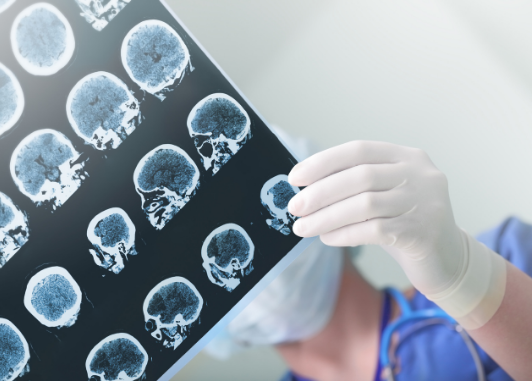By Kateriine Orav, Department of Neurology, North Estonia Medical Centre, Tallinn, Estonia
The prevention of post-stroke epilepsy is a rising concern with increasing numbers of post-stroke survivors and patients with post-stroke epilepsy.1 Epileptogenesis after stroke involves the development and extension of tissue capable of generating spontaneous seizures, resulting in the development of epilepsy.2
This process consists of a complex cascade of progressive molecular and cellular alterations that are still poorly understood.3 Currently, there are no treatment options to prevent the development of post-stroke epilepsy but such interventions are urgently needed.2 Having a better understanding of patients who are most at risk and the underlying mechanisms may allow for such strategies to be developed. This post will review some experimental evidence of interventions for epilepsy prevention. For a review of risk factors and biomarkers for developing post-stroke epilepsy see part 1 of this topic.
In animal studies of acquired epilepsies several antiseizure drugs (such as levetiracetam, brivaracetam, topiramate, gabapentin, pregabalin, vigabatrin and eslicarbazepine acetate) have shown antiepileptogenic or disease-modifying effects.4 Of these, levetiracetam has been studied in a clinical trial comparing 12 weeks of administering the drug after stroke compared to placebo, but was stopped due to poor recruitment.5 However, levetiracetam has shown a possible antiepileptogenic effect in trials evaluating it in traumatic brain injury and perioperatively in surgically treated refractory temporal lobe epilepsy.4
Several studies have shown a reduced risk of early seizures and post-stroke epilepsy with statin therapy in patients with ischaemic and haemorrhagic stroke. Statins could have a neuroprotective effect through the reduction of excitotoxicity, suppression of reactive astrogliosis and reduction of blood-brain barrier permeability which may influence epileptogenesis. Some studies have found that this protective effect may vary depending on the lipophilicity and dose of the statin.6 Although the certainty of the evidence is low, these are findings that warrant further investigation.
In addition to statins and antiseizure medicines, some other drugs that are in clinical use have shown antiepileptogenic or disease-modifying effects in animal studies. These include ceftriaxon, losartan, isoflurane and N-acetylcysteine. Repurposing of available drugs could be an attractive strategy to evaluate antiepileptogenic potential.4 Network pharmacology is a recently proposed strategy involving a combination of drugs that target different mechanisms of the epileptogenic network simultaneously.4 For example, the combination of topiramate and levetiracetam has shown some promise in preclinical trials.7
Even though post-stroke epilepsy is the most common form of acquired epilepsy, it has received relatively little academic interest.3 So far there is no evidence to support interventions to prevent post-stroke epilepsy in humans and the ESO guideline for the management of post-stroke seizures and epilepsy recommends against antiseizure therapy for the prevention of post-stroke epilepsy.9 One randomized controlled trial compared four-week treatment with valproate to placebo in 72 patients with intracerebral haemorrhage and did not find significant differences in seizure occurrence after one year.10 Post-traumatic epilepsy is another common preventable epilepsy and currently the large international Epilepsy Bioinformatics Study for Antiepileptogenic Therapy (EpiBioS4Rx) is investigating acute electrical, structural and blood biomarkers in post-traumatic brain injury to identify at risk patient populations and develop techniques to carry out feasible clinical trials of epilepsy prevention therapies in this patient population.8 With an increased burden of stroke and post-stroke epilepsy similar co-ordinated research efforts will be necessary also in the field of post-stroke epilepsy.
References:
- Thurman DJ, Begley CE, Carpio A, et al. The primary prevention of epilepsy: A report of the Prevention Task Force of the International League Against Epilepsy. Epilepsia. 2018 May;59(5):905-914. doi: 10.1111/epi.14068
- Pitkänen A, Roivainen R, Lukasiuk K. Development of epilepsy after ischaemic stroke. Lancet Neurol. 2016 Feb;15(2):185-197. doi: 10.1016/S1474-4422(15)00248-3.
- Zelano J, Holtkamp M, Agarwal N, et al How to diagnose and treat post-stroke seizures and epilepsy. Epileptic Disord. 2020 Jun 1;22(3):252-263. doi: 10.1684/epd.2020.1159.
- Klein P, Friedman A, Hameed MQ, et al. Repurposed molecules for antiepileptogenesis: Missing an opportunity to prevent epilepsy? Epilepsia. 2020 Mar;61(3):359-386. doi: 10.1111/epi.16450.
- van Tuijl JH, van Raak EP, de Krom MC, et al. Early treatment after stroke for the prevention of late epileptic seizures: a report on the problems performing a randomised placebo-controlled double-blind trial aimed at anti-epileptogenesis. Seizure. 2011 May;20(4):285-91. doi: 10.1016/j.seizure.2010.12.012.
- Nucera B, Rinaldi F, Nardone R, et al. Statins in primary prevention of poststroke seizures and epilepsy: A systematic review. Epilepsy Behav. 2020 Nov;112:107400. doi: 10.1016/j.yebeh.2020.107400.
- Schidlitzki A, Bascuñana P, Srivastava PK, et al. Proof-of-concept that network pharmacology is effective to modify development of acquired temporal lobe epilepsy. Neurobiol Dis. 2020 Feb;134:104664. doi: 10.1016/j.nbd.2019.104664.
- Vespa PM, Shrestha V, Abend N, et al. The epilepsy bioinformatics study for anti-epileptogenic therapy (EpiBioS4Rx) clinical biomarker: Study design and protocol. Neurobiol Dis. 2019 Mar;123:110-114. doi: 10.1016/j.nbd.2018.07.025.
- Holtkamp M, Beghi E, Benninger F, et al. European Stroke Organisation. European Stroke Organisation guidelines for the management of post-stroke seizures and epilepsy. Eur Stroke J. 2017 Jun;2(2):103-115. doi: 10.1177/2396987317705536.
- Gilad R, Boaz M, Dabby R, Sadeh M, Lampl Y. Are post intracerebral hemorrhage seizures prevented by anti-epileptic treatment? Epilepsy Res. 2011 Aug;95(3):227-31. doi: 10.1016/j.eplepsyres.2011.04.002.



